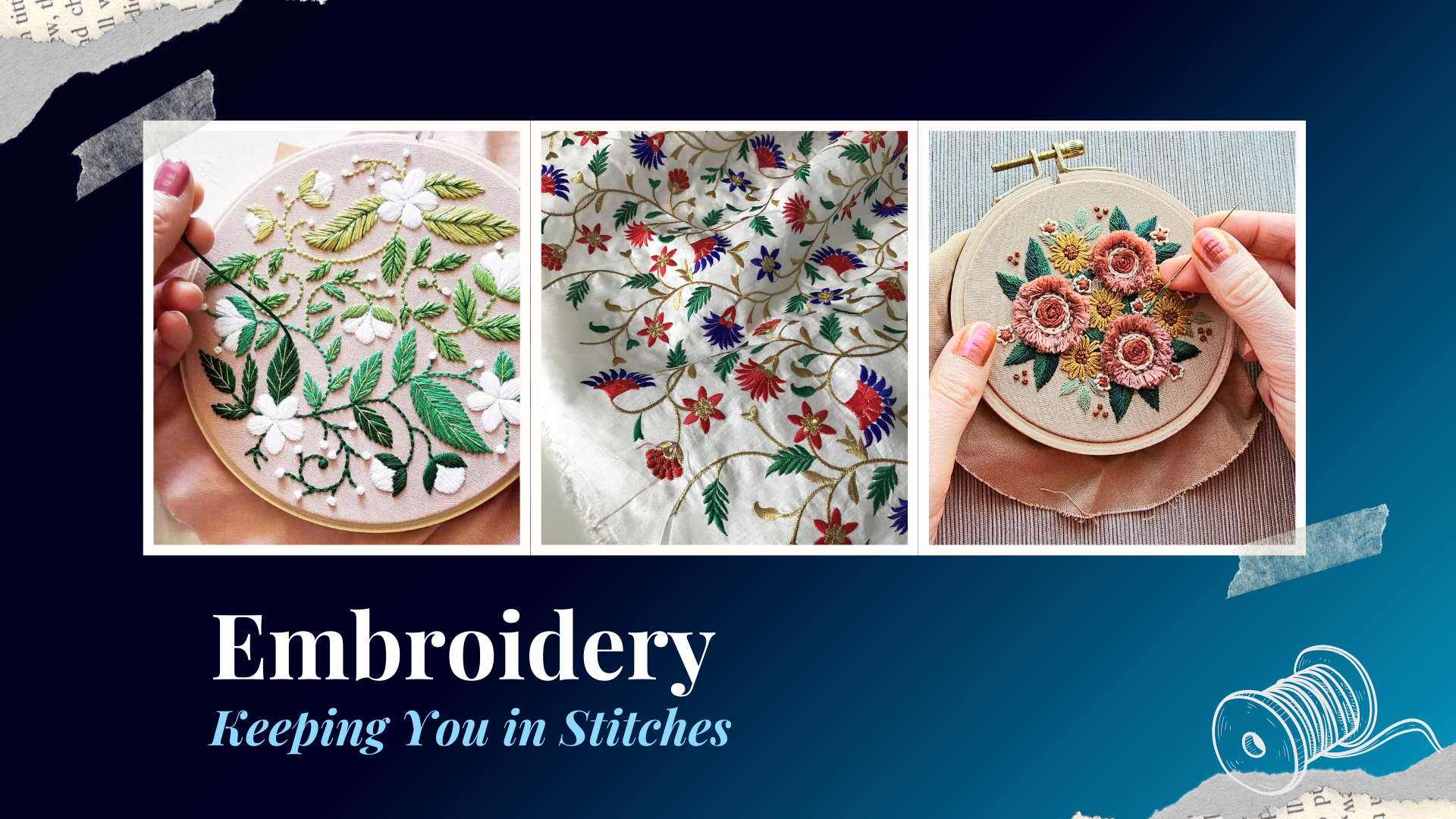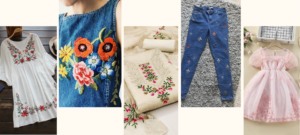
Home » Embroidery: What is the History Woven into Every Thread?

Embroidery and hand stitches are related to keeping you in stitches. When it comes to clothing design, stitches are crucial. Their influence on the look, feel, and textures of the clothes is substantial. Small stitch details can have a big impact on simple clothing. An embroidery is created when a design is created by the interlacing of stitches.
Embroidery stitch is performed through fabric using thread and a threaded sewing needle. Embroidery is an old-fashioned decorative needlework technique in which designs and pictures are created by “stitching” strands of one material onto a layer of another. Besides being a decorative and artistic medium, embroidery has found application. Indian embroidery draws its inspiration from both nature and religion. The colors, base, theme, and style all allude to a particular place.
Embroidery has been a means of self-expression for women for a long time because it represents their cultural traditions and religious beliefs, mimics their lives, and reflects their hidden hopes and aspirations. The value of the cloth is increased by embroidery by adding decoration. Historically, family customs were greatly influenced by embroidery.

RECENT POSTS
CATEGORIES
TAGS
Agriculture Agriculture future AI Architecture artificial intelligence Bachelor of Commerce BA English BA Psychology BTech AIML BTech CSE BTech cybersecurity BTech Engineering Business management career Career-Specific Education career guide career option career scope Civil engineering commerce and management Computer Science Computer science engineering Data science degree education Engineering Engineering students English Literature english program Fashion Design Fashion design course Higher Education Journalism journalism and mass communication law Law career Machine Learning mathematics MBA MBA specialization Mechanical Engineering Pharmacy Psychology Research and Development students
University Address: Nachauli, Jasana Road, Faridabad, Haryana
For Admissions :
Toll Free: 1800-120-4613
Mobile : 8447744303 | 8447744304 | 8447744306 | 8447744309
8700003974 | 8700003411 | 8700003749
Address: C-72, Second Floor, Shivalik, Near Malviya Nagar,
Above HDFC Bank, New Delhi 110017
Landline No. - 011-46570515 / 45138169 / 41755703
Mobile No. - +91-7303152412 / +91-7303152420 / +91-9311321952
Jagmani Kutir, Ground Floor, Road No-1, Rajeev Nagar,
Near Darbar Marriage Hall, Patna-800024, Bihar
Contact No: 9818352069/ 8130120095
Mail: kanhaiya@lingayasvidyapeeth.edu.in
Copyrights © 1998 - 2025 Lingaya's Vidyapeeth (Deemed To Be University). All rights reserved.
It is important to note that the following email IDs and domains are fraudulent and do not belong to our university.
LV only conducts physical/online verification of any document related to examination on the following email id: